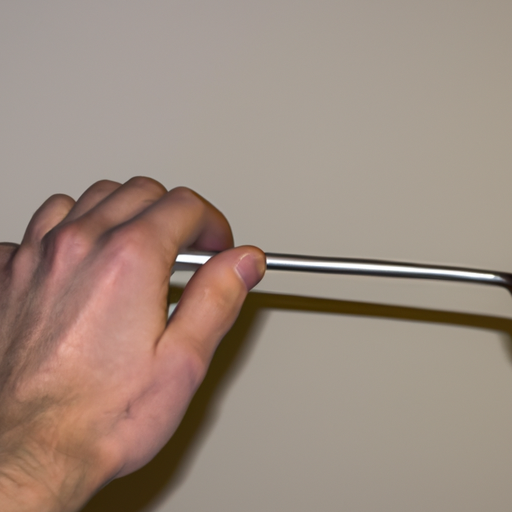
Proper Golf Grip Left Hand
Whether you’re a seasoned golfer or just starting out, the importance of a proper golf grip cannot be overstated. In particular, the way you hold the club with your left hand can greatly affect your swing and overall performance on the course. In this article, we will explore the key elements of a proper golf grip for the left hand, providing you with valuable tips and techniques to enhance your game. Get ready to achieve better control, accuracy, and power by mastering the proper golf grip with your left hand.
Proper Golf Grip Left Hand
Importance of a proper grip
Having a proper grip on the golf club is crucial for any golfer, whether you are a beginner or an experienced player. The grip sets the foundation for your swing and ultimately determines the direction, control, and power of your shots. A correct grip can enhance your ability to square the clubface at impact, leading to more consistent and accurate shots.
Positioning of the left hand
As a right-handed golfer, your left hand plays a vital role in controlling the club throughout your swing. To achieve a proper grip, start by positioning the club handle diagonally across the base of your fingers in your left hand. The handle should rest across the pad at the base of your fingers, just above the crease of your palm.
Fingers placement
Now that you have positioned the club in your left hand, let’s focus on the placement of your fingers. Wrap your fingers around the handle, with your left thumb resting slightly to the right of the center of the grip. The index finger of your left hand should be extended down the shaft, forming a straight line towards the clubface. The middle and ring fingers should naturally curl around the handle, providing stability and control.
Pressure applied
The way you apply pressure to the grip is essential for a proper golf swing. It is advised to apply a moderate pressure to the handle, neither too tight nor too loose. A grip that is too tight can restrict your wrist movement, leading to a tense and inconsistent swing. On the other hand, an overly loose grip can cause the club to slip during your swing. Find a comfortable balance where you maintain control while still allowing for fluid movement.
Alignment with the club
To ensure a proper grip, it is crucial to align your left hand with the clubface. The “V” shape formed by the thumb and index finger of your left hand should point towards your right shoulder. This alignment helps promote a square clubface and encourages a proper release through impact. Remember to maintain this alignment throughout your swing to optimize your shot accuracy and control.
Connection with the fingers of the right hand
Now that your left hand is properly positioned, it’s time to connect it with the fingers of your right hand. Your left thumb should fit snugly into the lifeline of your right hand, creating a connection that stabilizes the grip. This connection between the hands allows for a unified and synchronized swing, ensuring that your clubface stays square throughout impact.
Overlap grip
One common grip technique is the overlap grip, also known as the Vardon grip. With this grip, the little finger of your right hand rests on top of the index finger of your left hand. The two fingers interlock comfortably, creating a secure grip. Many professional golfers prefer the overlap grip for its ability to promote a fluid and natural swing.
Interlock grip
Another popular grip option is the interlock grip, commonly used by golfers with smaller hands or shorter fingers. To achieve this grip, intertwine the little finger of your right hand with the index finger of your left hand. The two fingers should lock together, providing stability and control. The interlock grip helps to maintain a connected swing, allowing for maximum power and control.
Baseball grip
The baseball grip, sometimes referred to as the 10-finger grip, is an alternative grip style that is often favored by beginners or those with hand strength limitations. With this grip, all ten fingers grip the club, providing a secure and comfortable hold. The baseball grip may sacrifice some control and precision compared to other grips, but it can be a suitable option for those who struggle with the more traditional grips.
Maintaining the grip during the swing
During your swing, it is essential to maintain a consistent grip pressure and position. Avoid any excessive tension or adjustments that may lead to a loss of control or accuracy. As you practice and develop your swing, pay attention to how your grip feels and make any necessary adjustments to ensure a comfortable and effective hold on the club.
In conclusion, a proper grip on the golf club, particularly the left hand, is vital for achieving a successful swing. By correctly positioning your left hand, placing your fingers correctly, applying proper pressure, aligning with the club, connecting with the right hand, and choosing the appropriate grip style, you can optimize your control, power, and accuracy on the golf course. Take the time to practice and find the grip that works best for you, and you’ll be on your way to improving your golf game.



